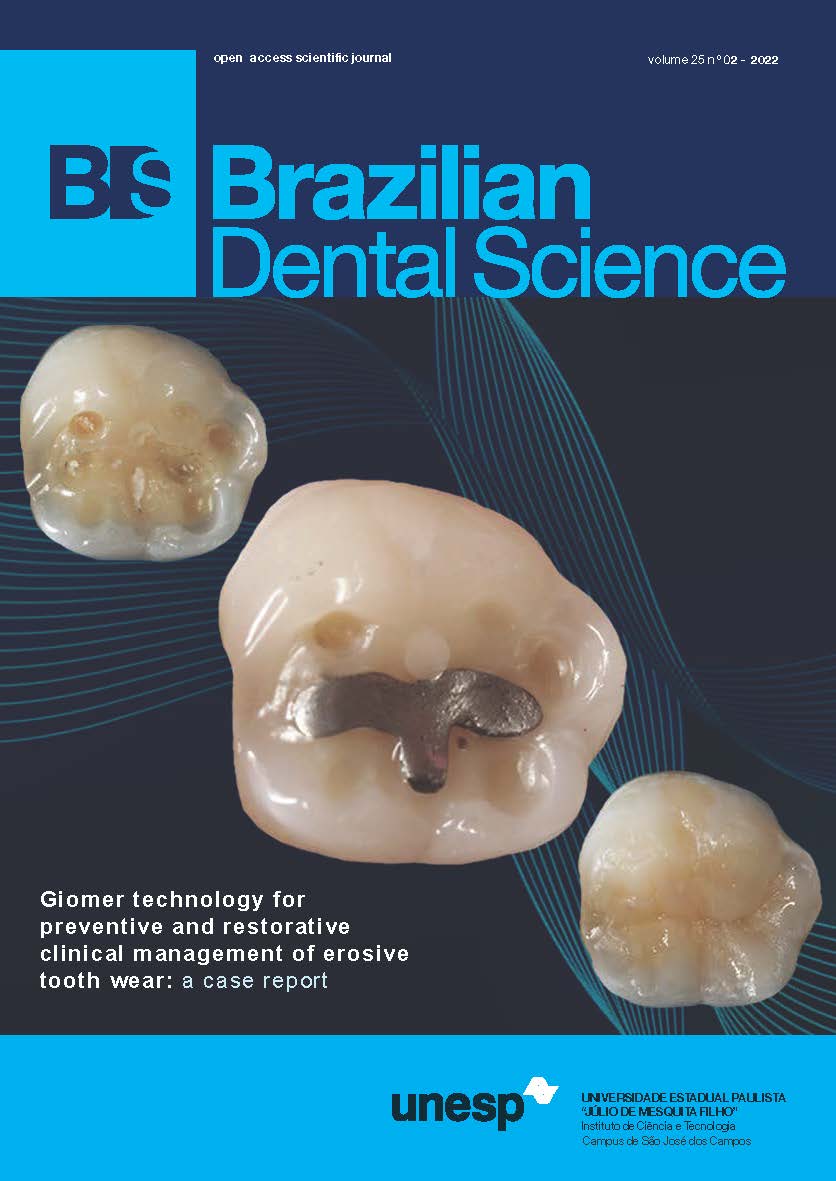Influence of calcium lactate and sodium fluoride solution mouthwashes on enamel microhardness and dentin permeability during in-office bleaching
DOI:
https://doi.org/10.4322/bds.2022.e3076Abstract
Objective: This study evaluated the influence of calcium lactate and sodium fluoride mouthwashes on enamel
microhardness and dentin permeability during in-office bleaching. Material and Methods: For the microhardness
evaluation, enamel blocks were randomly submitted to different treatments associated with in-office bleaching
agent using 40% hydrogen peroxide (Opalescence Boost PF 40%/ Ultradent; 3 sessions x 40-minute each)
(n = 10): 1) Control: application of bleaching agent; 2) Calcium lactate: 1-minute immersion before bleaching
treatment; 3) Sodium fluoride: immersion for 1 minute before bleaching treatment; 4) Calcium lactate +
sodium fluoride: 1 minute immersion in calcium lactate solution, followed by 1 minute immersion in sodium
fluoride before bleaching treatment. Dentin discs received the same treatment protocols (n = 10) to evaluate
permeability. Knoop microhardness and dentin permeability assessments were performed twice (at baseline and
48 hours after the end of bleaching treatment). Results: The generalized linear model considering the design of
repeated measures over time showed that there was no significant difference between treatments (p = 0.9577)
and between assessments (p = 0.3267) regarding Knoop microhardness. Kruskal Wallis and Dunn tests showed
that calcium lactate immersion before bleaching treatment provided higher dentin permeability than other
groups (p = 0.0009). Conclusion: The use of sodium fluoride solution and calcium lactate in association with
in-office bleaching treatment did not influence the microhardness of tooth enamel, although calcium lactate
may increase dentin permeability.
KEYWORDS
Tooth bleaching; Dentin; Sodium fluoride; Calcium lactate; Hardness tests.
Downloads
Downloads
Published
How to Cite
Issue
Section
License
Brazilian Dental Science uses the Creative Commons (CC-BY 4.0) license, thus preserving the integrity of articles in an open access environment. The journal allows the author to retain publishing rights without restrictions.
=================




























